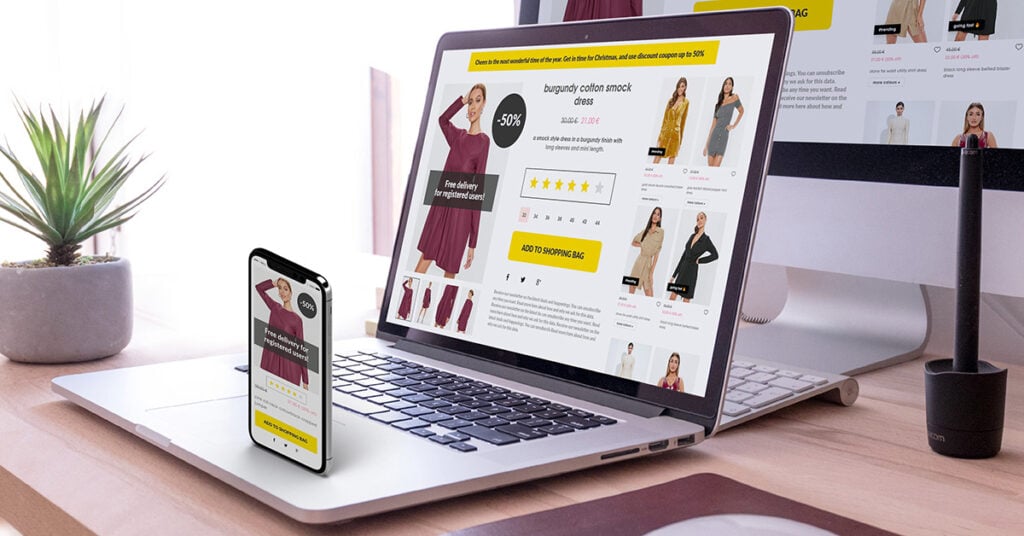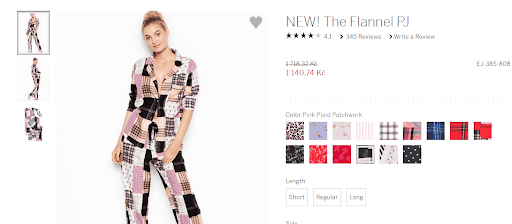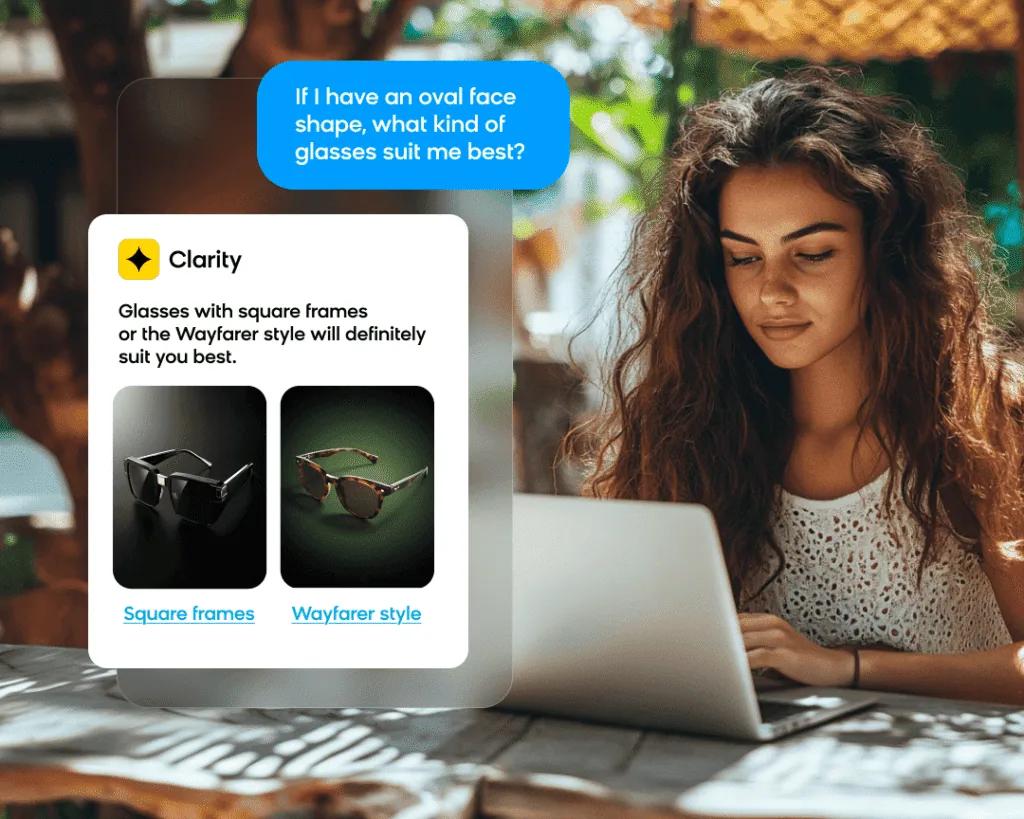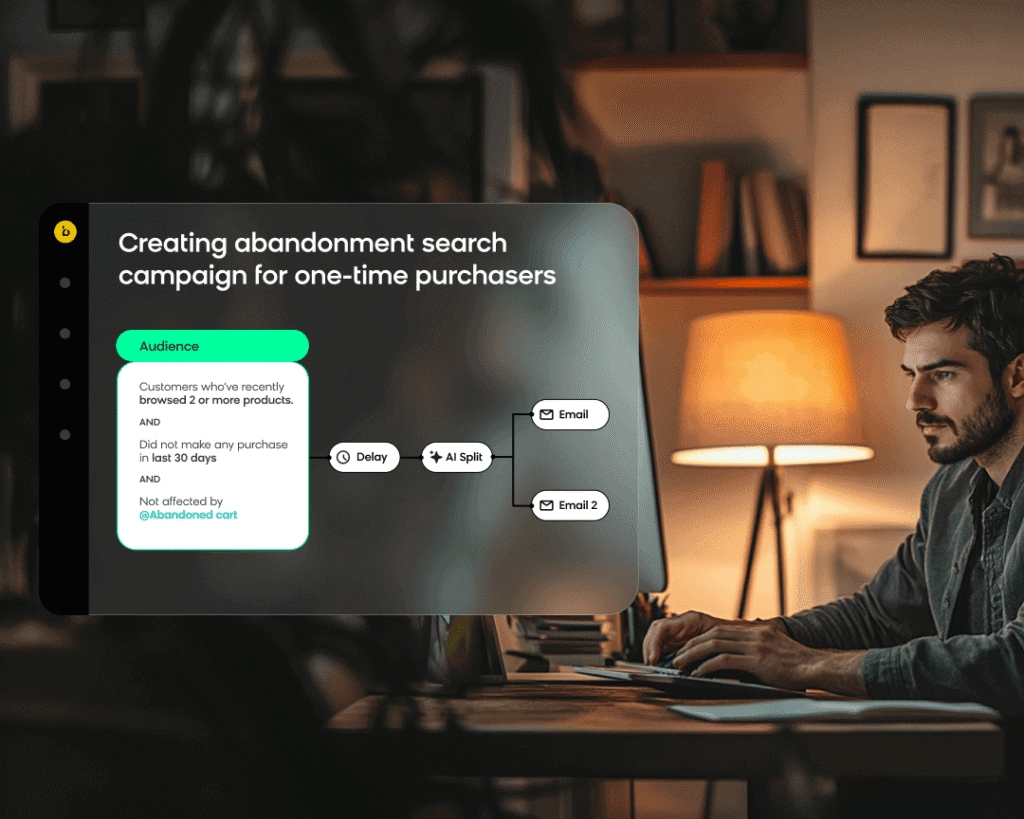Product returns are a major expense for online fashion retailers. These costs are not only made up of the shipping costs but also the restocking of the returned product and the gradual loss of value of the product over time. After all, a product returned is a product not sold and this must be managed effectively.
Fortunately, there are changes you can make to improve your customers’ buying decisions, which in turn will result in a lower return rate.
This article explores several UX improvements for your product pages and email marketing campaigns, and aims to motivate your high and serial returners to shop more mindfully.
Why do Fashion Ecommerce Businesses have High Return Rates?
The success of fashion businesses entirely depends on the ‘tangibility’ of their products: how does it enhance the image the customer has of themselves, how does it reflect a particular style, is it comfortable to wear?
When a customer tries on a garment in a brick-and-mortar store, these are the questions that run through their minds while considering this purchase. These questions are of a qualitative nature, often escaping the descriptions that we use in the product pages of our online stores: “wool/cotton mix single-breasted blazer” becomes a meaningless description at the point that the customer concludes their shopping journey (when the customer is making a final decision).
Online fashion retailers facilitate this qualitative element of the shopping journey by offering a generous return policy that allows customers to use their home as a fitting room. These policies facilitate over-ordering, which is the customers’ process of buying similar garments that vary in size, color, style, quality, and brand and returning the items that do not fit.
These return rates can vary wildly between online fashion retailers, ranging from 25 – 75%, while their pricing strategy takes a return rate of 50% into account. This variance between the anticipated and real return rate depends on the retailer’s return policy:
– Does the retailer offer free returns?
– Are there restocking fees for returning an item?
– What are the details of the return policy?
Why Improving the User Experience is a Better Strategy for Reducing the Return Rate
The more challenging or costly it is to return items, the lower the return rate, but customers are also much less incentivized to purchase when a discouraging return policy is introduced. They buy with the intention of immediately returning some of those items, and research indicates that 67% of customers will check the return policy before buying. A discouraging return policy will therefore negatively impact your conversion rate.
Our clients report the following key reasons for returns:
– The customer received the wrong garment
– The size is too large or too small
– The item doesn’t match the depiction on the product page
– The customer changed their mind about the product
When evaluating these reasons, we find that they can largely be traced back to administrative and communication issues that started with the retailer. A customer receiving a wrong item has its probable root cause in its registration in the inventory management system and its subsequent dispatching.
The other reasons have their root cause in the mismatch between the customer’s expectations and the reality of the product. Having photos on the product page that enable customers to inspect the item, and reviews that present the experiences of other customers, can help with reducing the return rate while maintaining the conversion rate.
UX Improvement Best Practices for Reducing the Return Rate
1 Incorporating High-Quality Photos
The most straightforward manner to provide the detail and clarity needed for making a definite purchase decision is to have high-resolution photos on the product page. These photos allow customers to zoom in and examine the various details of a garment, such as the weave patterns, stitching, buttons, and logos, helping them to fine-tune their expectations and reduce the chance of making a misinformed purchase decision.
2 Incorporating Product Reviews
PETCO, a US-based online retailer for animal supplies, shows customer ratings, reviews and questions on their product pages. They report that these tools strongly influence their customers’ purchase decisions, resulting in a 20.4% lower return rate for the products with a review compared to the products that don’t have one.
Researchers at Boston University conducted a study that examined how reviews impact purchase decisions. They found that reviews that give a detailed account of the product’s quality and usage contribute significantly to higher sales and lower returns.
On the other hand, products that have a high variance in their ratings raise doubts in the customers and tend to increase the return rate.
Source: Victoria’s Secret
3 Segmenting Your High-Returners
Another way to optimize your return rate is to segment your customers on particular traits and use this segmentation to personalize your online store’s messaging. Such a segmentation strategy may include customers’ reported return reasons, their general dislike of a particular style or brand, or a behavioral pattern of a high or serial returner.
The resulting personalized messaging can take the form of email marketing, web layers that promote good practice shopping, and an honesty declaration in the check-out process.
E-mail Marketing Campaigns
Public events, such as national holidays, Christmas, or Breast Cancer Awareness Month, generally bring a particular theme of fashion styles, colors, and fabrics with them.
When launching email marketing campaigns for these events, you can segment your customer base by the reasons they provided when returning items in the past. If, for instance, your email marketing campaign’s theme is pink, then you can choose not to send this message to customers who returned items with the reason that they dislike the color pink.
Banners that Promote Good Practice Shopping Behavior.
High returners are customers who return more items than your pricing strategy takes into account. These returners typically order more than two items, keep one, and return the rest. A persuasion technique called “labeling” allows you to counteract this shopping behavior. This technique works by giving customers compliments that project the shopping behavior you prefer to see, for example: “Thank you for being environmentally aware and only buying what you need”.
Even though this method sounds counterintuitive, research shows that compliments are very persuasive. People strive to live up to the compliments they receive and recognize them as an implicit expectation. The study that demonstrated this effect randomly labeled adults as “politically active”. The labeled group was 15% more likely to vote than those without labels.
This technique is easily implemented on your ecommerce website. Your customer base needs to be segmented by their return rate, after which the high returners can be targeted using website banners that praise them about their shopping behavior.
Honesty declaration for Serial Returners
Serial returners make up approximately 6.5% of all returns in online fashion retail. These customers return everything they buy, therefore effectively “renting” goods from your online store.
This behavior can be counteracted by having them sign an honesty declaration at the start of the check out process. This declaration may look like this: “I honestly declare that I buy products with the intent of keeping them.” It can be signed by simply letting them tick a checkbox.
The effectiveness of honesty declarations was investigated in a study where participants were asked to report their earnings and travel expenses for their participation in this study by filling in a tax form. They received their payment immediately after returning the form.
The study found that only 37% of participants who signed an honesty declaration ended up lying on their claim form. Compare that to group that did not receive an honesty declaration: 79% of them lied on their claims.
Key Learnings
The return rate of your online store can be easily optimized using simple amendments to your user experience.The spirit of these amendments is to create a shopping experience that is analogous to shopping in brick-and-mortar stores.
There are several high-impact techniques you can use:
- High-resolution images uncover details that are otherwise only seen when the product arrives in your customer’s home.
- Questions and Review sections on product pages provide insights your customers want.
- Banners and honesty declarations can motivate your high and serial returners to shop more mindfully.
- Customer return histories can help you to personalize your email marketing campaigns in the light of preventing unnecessary returns.
With all things considered, almost every aspect of the shopping journey contains a UX tweak that can contribute to an improved return rate.

















